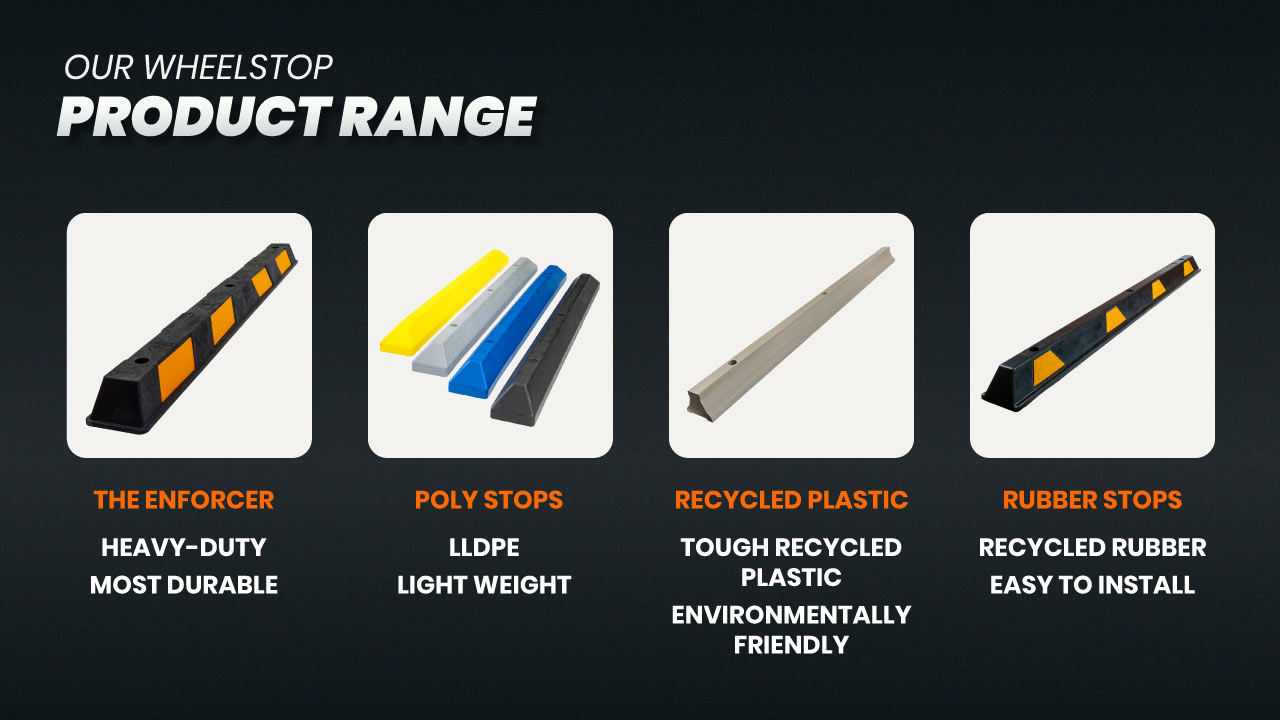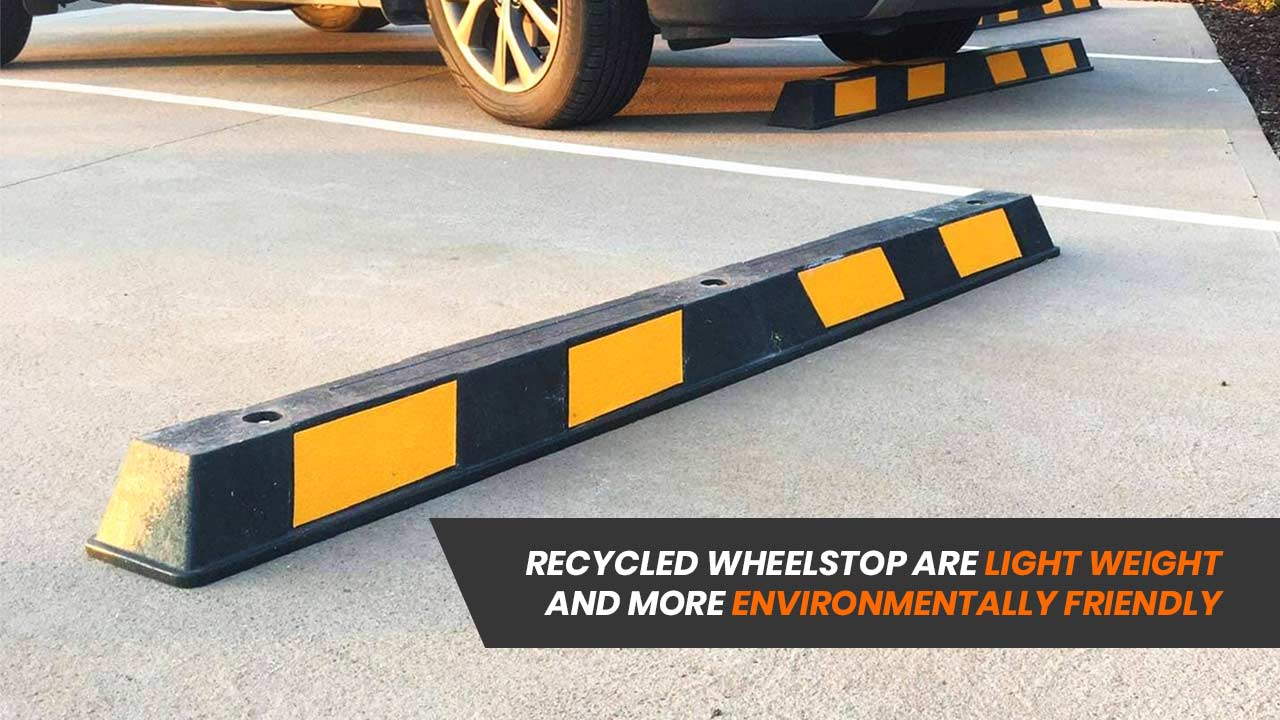If you’ve been looking at concrete parking blocks or wheel stops for your commercial or industrial car park and want to install them yourself, you may be wondering how to install concrete wheel stops. It’s not always as easy as it seems, as they are often heavy and hard to maneuver. So, we thought we’d run you through the steps for installing concrete stops and suggest some other options that you might not have considered.
How Are Concrete Stops Made?
Most concrete stops or parking blocks are precast, meaning they are made with moulds in one piece and left to set and dry before being turned out. They sometimes have internal steel rods embedded for increased strength, but this also adds to their already substantial weight. Depending on the manufacturer, there are different concrete mixes to try to get the most durable blend. When you think of parking blocks, you probably think of concrete ones, but unfortunately concrete often struggles to hold up over time and can easily crack and chip.
How To Install Concrete Wheel Stops?
There are heaps of specific tools and procedures required for installing concrete stops, and these can change depending on the surface you are installing them on. Whether it’s concrete or gravel and asphalt, you’ll need to clean the surface properly and have the capabilities to move and position them..jpg)
Concrete stops made to the Australian Standards specifications (1650mm long) can weigh 62kg or more. If you are planning to tackle installation yourself, you may find it difficult and time consuming. Not only that, but they usually require specialty equipment such as lifting slings to position them in place.
You’ll need to start by estimating the necessary distance of the stop from the kerb or wall, and think about whether the park is designated as front-in or rear-in. You will also need the proper tools: a drill with the appropriate masonry bit, screwbolts or fixing pins to screw the stops in place, and if you are installing on a gravel and asphalt surface, you’ll need some epoxy to add into the drill holes.
It’s a difficult process and you’ll need proper tools and equipment to install them and the assistance of professional installers, or at the very least several people who can help you.
The Better Option
Instead of using the old style concrete stops, the better option is to use lighter and more durable Polyethylene, rubber, or recycled plastics materials. Recycled options are also more environmentally friendly and have a smaller carbon footprint. Not only that, but wheel stops made from these materials are incredibly light and are able to be installed by one person.
Durability is incredibly important for parking blocks. They need to withstand the elements and often harsh conditions all over Australia. That’s why it’s important to find the right stops for the job and ensuring they are made out of the strongest materials. Unfortunately, concrete stops are notorious for cracking and chipping.
Our stops, such as the ones made out of Linear Low-Density Polyethylene (LLDPE), are the most durable stops on the market and designed for heavy wear.
Where You’ll Need Parking Blocks
You’ll likely need stops wherever there will be cars parked. Parking blocks, along with other carpark equipment, can be used to protect property, control traffic, and to indicate individual car spaces.
Stops are needed in industrial and commercial car parks, both large and small, because they stop cars from colliding with other cars, and with buildings, gardens or from blocking pedestrian walkways.
Some concrete stops are best suited for indoor use only, as they can’t withstand the elements outside. Selecting the right stop for the job is the first post of call. Take a look at our range to see the best options on the market.
Our Product Range
The Enforcer - This wheel stop is one-piece moulded, very easy to install, and has yellow reflective panels on either side to increase night-time visibility. It is a heavy-duty product which won't fade, chip, or crack. It is the most durable on the market.
Poly Stops - Coming in a range of colours to suit your location and preferences, the poly stops are made with Linear Low-Density Polyethylene (LLDPE). They are one-piece moulded, lightweight and very easy to install by one person, they won’t warp, crack, chip or rot.
Recycled Plastic Stops - Made from tough recycled plastic and weighing just 11kgs, these are environmentally friendly and very easy to install. They are a unique patented shape and our black option has Class 1 Diamond Grade reflective panels on either side to increase night time visibility.
Rubber Stops - Our rubber stops are environmentally friendly manufactured from recycled rubber. They are one-piece moulded, very easy to install, and have yellow reflective panels on either side to increase night time visibility. They are suitable on both concrete or asphalt surfaces, in factories, warehouses and all indoor carparks.
We hope this has answered your queries about how to install concrete wheel stops and given you a few ideas about other options on the market. If you have any questions, get in touch with our team of professionals today!

